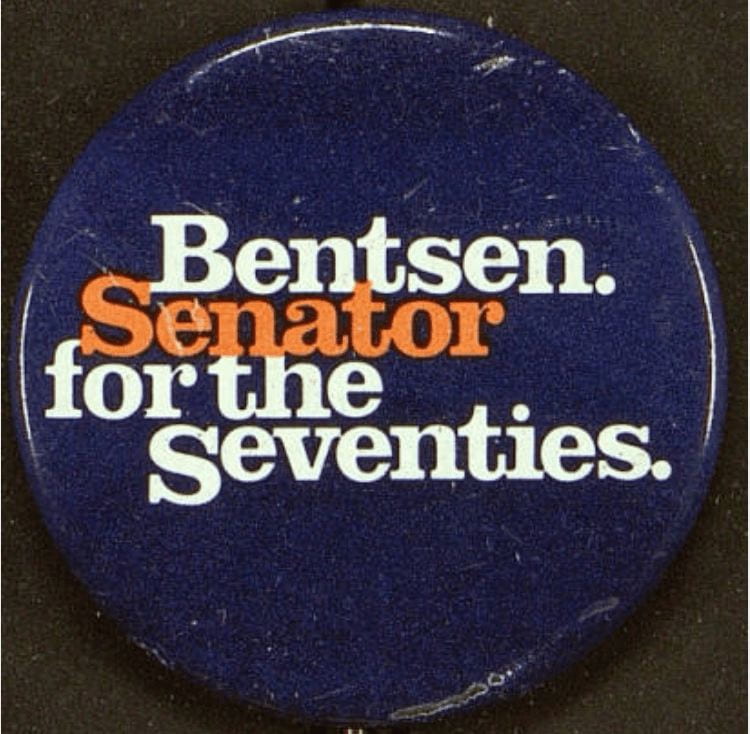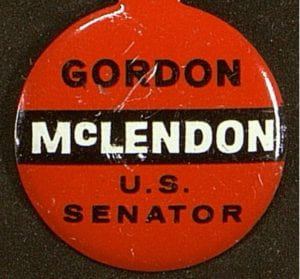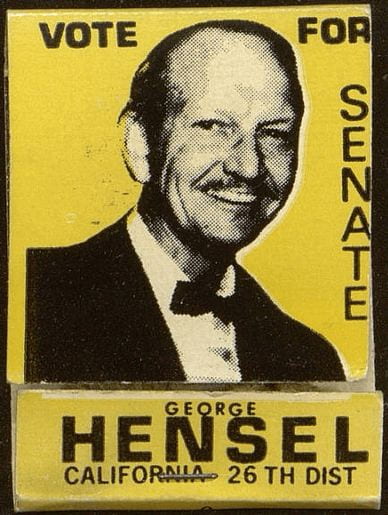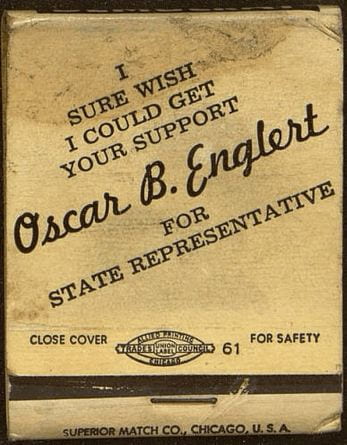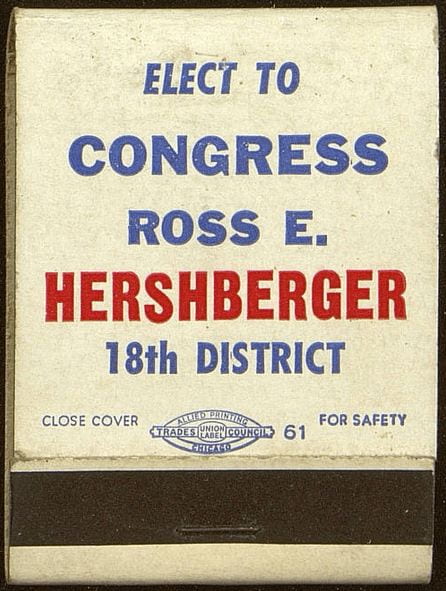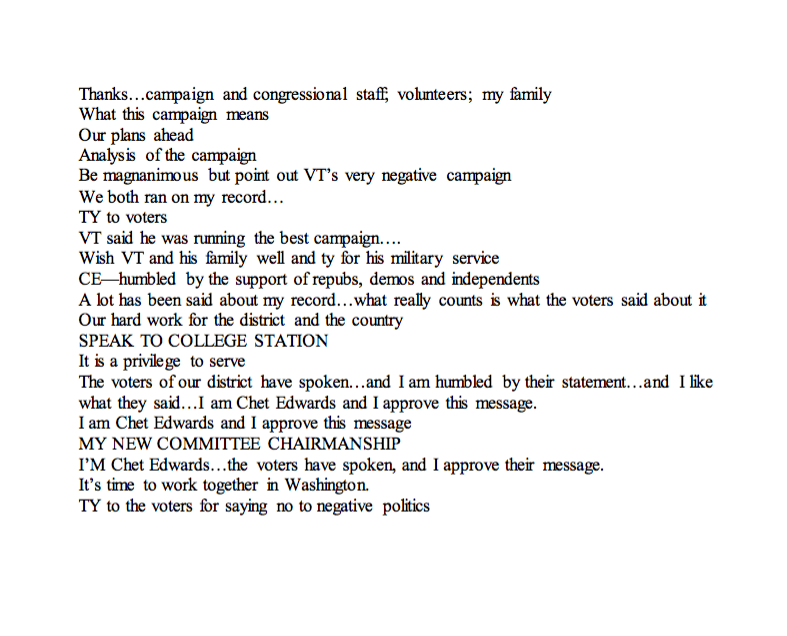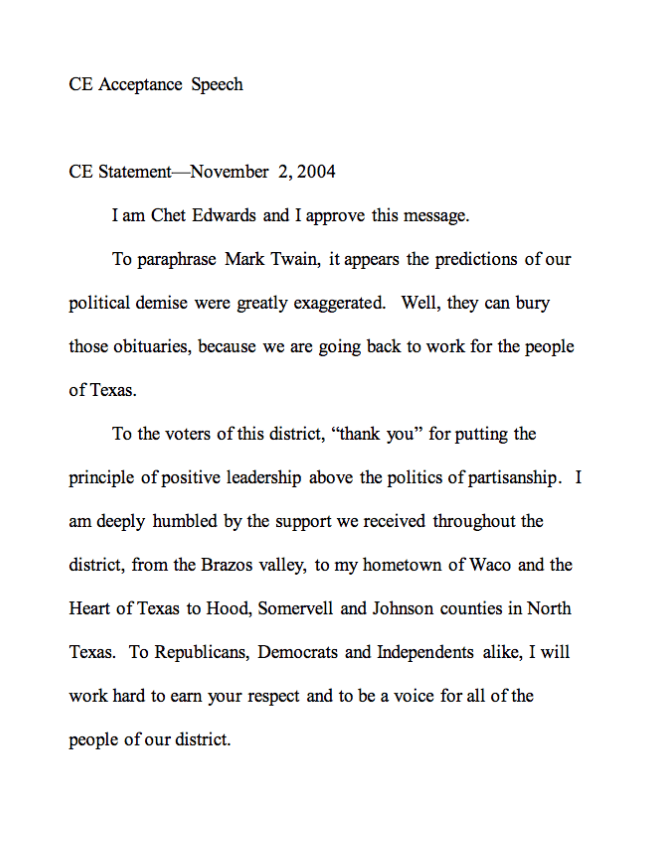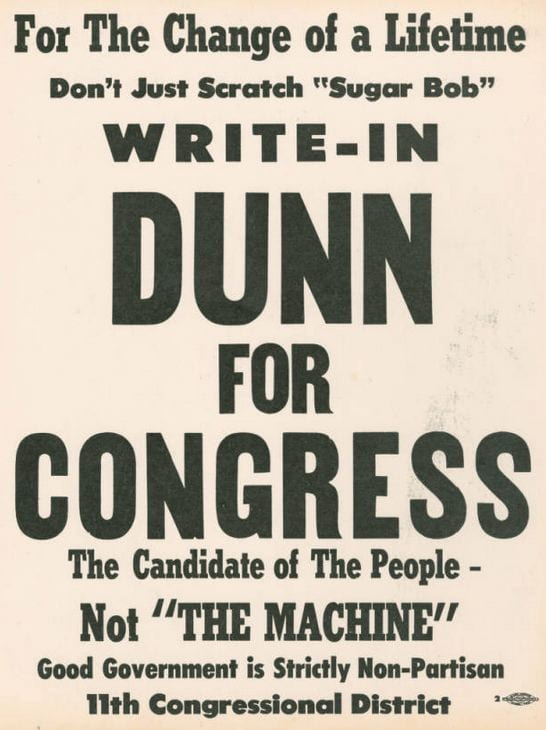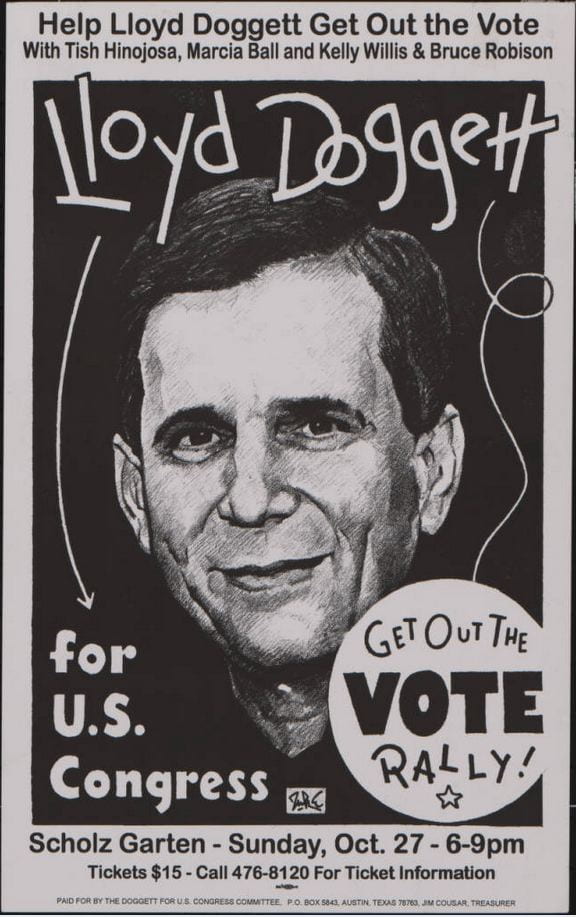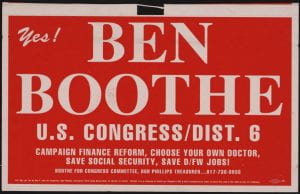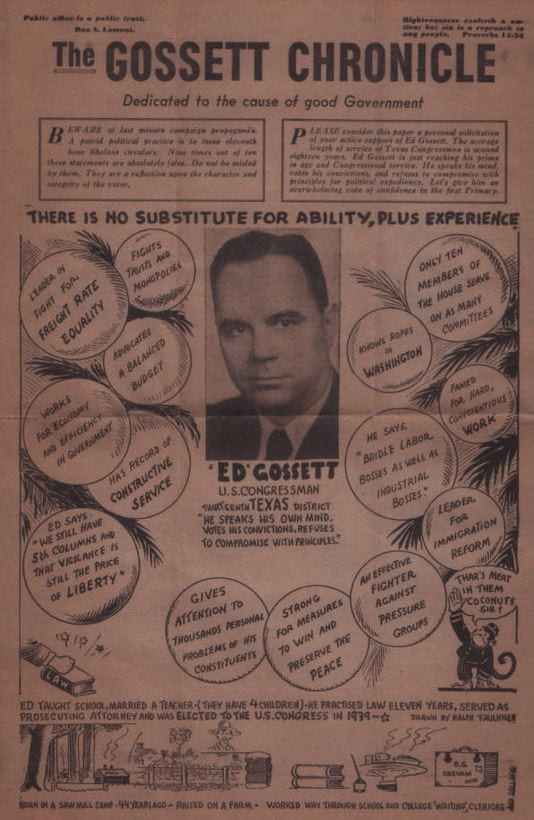
The #ElectionCollection digital exhibit was created to commemorate Election Day by showcasing some of our most interesting Congressional election-related materials from our collections. The assorted materials showcase governor’s, congressmen, and senators who have ran for Congress here in Texas. While campaign buttons are some of the most common forms of campaign materials, our collection also has an array of campaign posters, bumper stickers, and miscellaneous objects such as campaign matchbooks. The mission of the W. R. Poage Library is to explore and study modern American Politics. A great way of doing this is by analyzing the various ways politicians sought office. The two collections that have the most of our campaign memorabilia are Ben Guttery and Robert Platt.
BUTTONS
Campaign buttons are a fun and easy way for constituents to support their candidate. The buttons in this collection cover elections from many campaigns and districts across Texas. Campaigns often design their buttons to communicate pithy slogans and use bold colors to help possible voters remember a candidate. Some buttons, particularly those of incumbents, simply feature a candidate’s name. The buttons in our #ElectionCollection were donated by voters and campaigns to preserve the historicity of the election process.
Lloyd Bentsen was a United States Senator who represented Texas from 1971–1993. His most famous moment came during the 1988 vice presidential debate, when he chided his opponent, Dan Quayle, by telling him that “You’re no Jack Kennedy” in response to Quayle’s claim that he had as much experience as Kennedy did when he was elected.
Bexar (pronounced “bear”) County is a county in Texas that contains San Antonio. Although he did not represent Bexar County directly, Jack Hightower had supporters there who wore this button to show their support for his candidacy.
Campaign button for Jack Hightower, Democratic Party candidate, Bexar County, Texas
MATCHBOOKS
Matchbooks were once a popular advertisement for business due to their versatility and longevity, though this popularity has decreased as commercial lighters have become more widespread. For campaigns, matchbooks provided a way for voters to start political conversations while sharing a cigarette break. These matchbooks included similar design elements to campaign buttons and bumper stickers, though with the added bonus of everyday use by constituents.
George Hensel ran for California’s 26th District congressional seat in 1978. Although unsuccessful, his strategy of promoting his business experience and distancing himself from politics rewarded him with a second place finish.
George Hensel ran for California’s 26th District congressional seat in 1978. Although unsuccessful, his strategy of promoting his business experience and distancing himself from politics rewarded him with a second place finish.
Miscellaneous Items
Some of our items defy easy categorization. These items span the breadth of the election process from voter mobilization to actual vote casting. Each item in this collection provides insight into the democratic process and how candidates approached their pursuit of public office.
Campaign advertisement for Ed Gossett campaign
In one of the most egregious examples of utilizing their last name to do the campaigning for them, James “Jake” Pickle would pass out items in the shape of pickles to drum up awareness of his campaign. He passed out buttons, stickers, squeaky toys, and flashlights that were all pickled shaped during his 32-year long congressional career.
This voting machine is from the 1940 presidential Election. Included on the ballot is an option for governor, comptroller, United States Senator, and Representative in Congress. An interesting feature of this machine is the ability to either vote Democratic or Republican for each individual position or to vote strictly for whichever party you support all at once.
Voting machine from the 1940 national elections
While many members of Congress have every speech completely written out, some people — such as former congressman Chet Edwards — prefer to improvise. These fascinating texts shows which talking points Edwards considered significant enough to discuss while thanking his supporters after another successful campaign.
Text of talking points for speech by U.S. Rep. Chet Edwards
Posters
Campaigns designed their posters for display in both public and private arenas. As such, they had to appeal to a variety of possible voters. They had to be simple enough to convey information about a candidate’s policies while also being interesting enough to catch voters’ attention. Walking this fine line continues to be a difficult process, and campaigns today sometimes employ cutting-edge graphic designers to create their posters.
Although best known as being the Comptroller of Texas, Bob Bullock started his political career as the Texas State Representative of the 54th District. While supplementing his campaign with posters such as this, Bullock found most of his support by walking door-to-door and talking to his future constituents.
Poster for Bob Bullock for Congress campaign
Credits
Baylor Collections of Political Materials, Digital Projects Group
